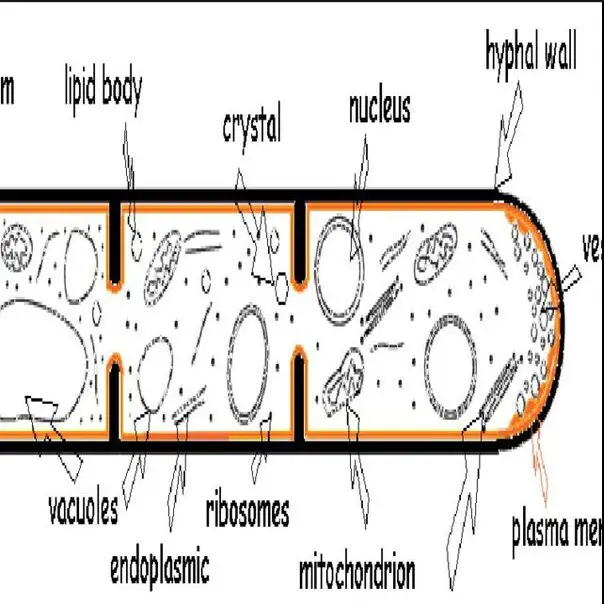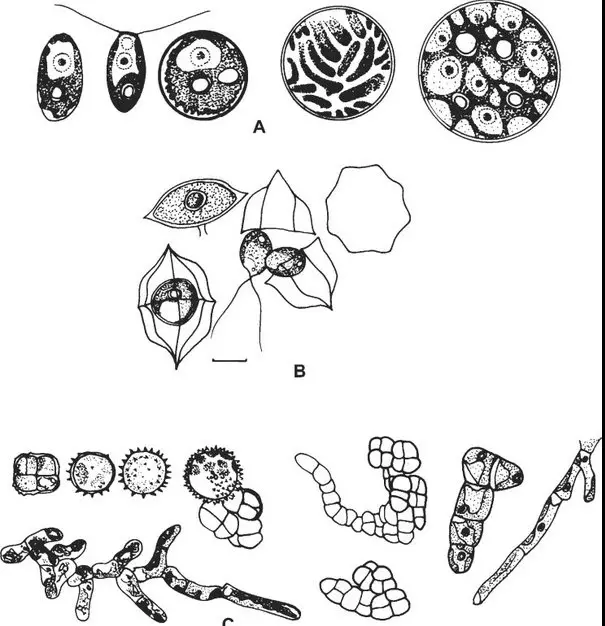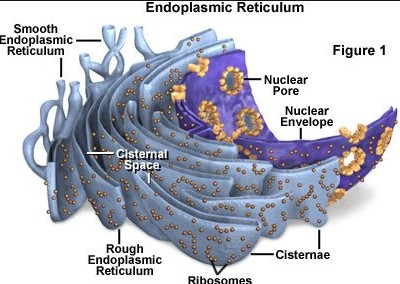In the vast and diverse world of algae, the complexity of cell structure plays a crucial role in the classification, ecological adaptation, and evolutionary trajectory of these organisms. Among the myriad of structural forms, coenocytic and heterotrichous algae stand out for their unique cellular arrangements and functionalities. These two terms, though less commonly discussed outside of botanical and biological circles, represent significant variations in algal architecture that have implications for their survival, reproduction, and ecological roles.
Coenocytic algae are characterized by their multi-nucleated, single-celled structure without cross-walls or septa dividing the cell interior. In contrast, heterotrichous algae exhibit a more complex structure, consisting of filaments that differentiate into two or more types of cells, often serving different functions within the organism. This distinction not only affects how these algae grow and reproduce but also their interaction with their environment.
Understanding the differences between coenocytic and heterotrichous algae sheds light on the adaptive strategies of algae across different environments. It reveals the evolutionary pathways that have led to the diversity we see today in aquatic and terrestrial ecosystems. The specific characteristics of each type highlight the complexity of life and the myriad of solutions nature has evolved to navigate the challenges of survival and reproduction.

Coenocytic Explained
Definition of Coenocytic Structure
In the realm of algae and fungi, a coenocytic structure represents a unique cellular configuration. This term describes an organism composed of a single, elongated cell containing multiple nuclei. Unlike typical multicellular or unicellular organisms, coenocytic structures lack internal cell walls (septa), allowing for a shared cytoplasm among all nuclei. This distinctive feature facilitates various biological processes, including growth and nutrient distribution, across the entire organism without the divisional boundaries seen in multicellular counterparts.
Characteristics and Features
Coenocytic organisms exhibit several notable characteristics:
- Multiple Nuclei: Unlike typical cells, coenocytes contain multiple nuclei within a shared cytoplasm, allowing for coordinated growth and function.
- Lack of Septa: The absence of internal cell walls results in a continuous cytoplasmic mass, enhancing metabolic efficiency and resource distribution.
- Rapid Growth: The coenocytic structure enables rapid growth and expansion, as cell division processes are not limited by cell wall construction.
- Flexible Morphology: These organisms can adapt their shape more freely than those restricted by rigid cell walls, allowing for versatile interactions with their environment.
Examples in Nature
Coenocytic structures are not widespread but can be found in specific algae and fungi, offering fascinating glimpses into the diversity of life:
- Green Algae (Chlorophyta): Certain green algae, such as those in the genus Caulerpa, exhibit coenocytic structures, thriving in marine environments with their unique, branching forms.
- Fungi: Some fungi, including the bread mold Rhizopus, possess coenocytic mycelium at various life stages, facilitating their rapid growth and reproduction.
Heterotrichous Detailed
Definition of Heterotrichous Structure
Heterotrichous structure in algae refers to a form of organization where the organism develops two or more types of distinct filaments. This differentiation allows for specialized functions within the same organism, such as anchorage, nutrition, and reproduction. Heterotrichy represents an evolutionary strategy to exploit diverse ecological niches by varying physical structure and functional roles within a single organism.
Characteristics and Features
Heterotrichous algae display a range of features that underscore their adaptability and complexity:
- Differentiated Filaments: These organisms have distinct types of filaments, each adapted for specific tasks, enhancing survival and efficiency.
- Versatile Adaptation: The ability to differentiate parts of their body allows these algae to anchor themselves, absorb nutrients, and reproduce in varied environments.
- Complex Life Cycles: Heterotrichous algae often exhibit more complex life cycles than their simpler counterparts, with stages adapted to different ecological roles or conditions.
Examples in Nature
Several examples of heterotrichous algae underscore their ecological importance and evolutionary success:
- Stigeoclonium: A freshwater alga that exhibits clear differentiation into rhizoids for anchorage and filaments for photosynthesis.
- Fucus: Though not an alga in the strictest sense, this brown seaweed demonstrates heterotrichy through its differentiated holdfasts, stipes, and reproductive structures.
Comparative Analysis
Cellular Organization
Coenocytic and heterotrichous structures illustrate two vastly different approaches to cellular organization and specialization. Coenocytic organisms prioritize efficiency and rapid growth through a shared cytoplasm and multiple nuclei, avoiding the energy costs of cell division and wall formation. In contrast, heterotrichous algae invest in structural complexity, developing specialized cells and filaments for different tasks, from anchorage to reproduction.
Reproduction Methods
The reproductive strategies of these organisms also diverge significantly:
- Coenocytic: Reproduction often involves the simple division of nuclei within the shared cytoplasm, followed by sporulation or fragmentation, mechanisms that favor rapid propagation.
- Heterotrichous: These algae might employ more complex reproductive strategies, including sexual reproduction with distinct male and female gametes and specialized reproductive structures.
Ecological Roles
The ecological significance of each structure is profound, with coenocytic organisms often thriving in environments where rapid growth and flexibility are advantageous. Meanwhile, heterotrichous algae excel in habitats requiring specialization, such as variable substrates or competitive ecological niches, where their differentiated structures offer a distinct advantage.
Advantages and Disadvantages
Both structures present unique benefits and limitations:
- Coenocytic: Their rapid growth and metabolic efficiency are offset by potential vulnerabilities to environmental changes and predators, given their single, large-cell nature.
- Heterotrichous: While their complexity allows for specialized functions and adaptability, it also requires more energy for maintenance and development, possibly limiting their growth rate compared to coenocytic forms.

Evolutionary Perspectives
Evolutionary Origins of Coenocytic and Heterotrichous Structures
The evolutionary pathways leading to the development of coenocytic and heterotrichous structures in algae and fungi represent nature’s response to the challenges of survival, reproduction, and ecological competition. Coenocytic structures likely emerged as a strategy to maximize growth speed and efficiency. By eliminating the need for cell division walls, these organisms could rapidly expand their biomass and exploit resources more effectively than their compartmentalized counterparts. This trait is particularly advantageous in nutrient-rich environments where quick growth can outpace competitors and predators.
In contrast, heterotrichous structures evolved as a means of specializing in more complex or variable environments. The differentiation of cells allowed these organisms to perform multiple functions simultaneously, such as anchoring to substrates, maximizing photosynthetic efficiency, and adapting to fluctuating environmental conditions. This diversification of roles within a single organism can be seen as a sophisticated evolutionary strategy to colonize a broader range of habitats, from freshwater to marine ecosystems.
Adaptive Significance in Various Environments
The adaptive significance of these structures cannot be overstated. Coenocytic algae and fungi excel in environments where rapid growth is crucial for survival, such as in the case of bloom-forming algae that need to quickly cover vast areas. Their large, multinucleated cells allow for efficient resource distribution and rapid response to environmental cues.
Heterotrichous algae, with their ability to specialize cell functions, thrive in environments that require adaptation to specific challenges, such as anchorage in fast-flowing waters or efficient nutrient absorption in nutrient-poor substrates. This cellular specialization enables heterotrichous organisms to exploit niches that might be inaccessible to less specialized forms, contributing to their ecological success and diversity.
Application and Importance
Practical Applications in Biotechnology and Research
The unique characteristics of coenocytic and heterotrichous structures have found practical applications in various fields, including biotechnology, environmental science, and medicine. Coenocytic organisms, with their rapid growth rates and large biomass production, are prime candidates for biofuel production. Their ability to efficiently convert sunlight and carbon dioxide into biomass makes them attractive targets for renewable energy research. Furthermore, the study of coenocytic cell division and growth has implications for understanding cancer and tumor growth, as well as for the development of novel therapeutic strategies.
Heterotrichous algae, with their specialized cell types, serve as excellent models for studying cell differentiation and development. Their adaptability and resilience make them valuable in environmental biotechnology, particularly in bioremediation projects where their ability to absorb pollutants and heavy metals can be harnessed to clean up contaminated water bodies. Additionally, the bioactive compounds produced by some heterotrichous algae have potential applications in pharmaceuticals, offering new avenues for drug discovery and development.
Importance in Ecological Systems and Biodiversity
The ecological roles of coenocytic and heterotrichous algae extend far beyond their immediate environments. They play pivotal roles in aquatic ecosystems, contributing significantly to oxygen production and acting as foundational species in food webs. By providing essential nutrients and habitat for a wide range of aquatic organisms, these algae support biodiversity and ecosystem health.
Coenocytic algae, with their capacity for rapid growth, often form the basis of food chains in aquatic environments, supporting a diverse array of wildlife. In some cases, they can also act as bioindicators, signaling changes in water quality and ecosystem health.
Heterotrichous algae, with their specialized structures, contribute to the structural complexity of habitats, offering refuge and breeding grounds for various aquatic species. Their presence in an ecosystem can significantly affect species composition and biodiversity, making them key players in maintaining ecological balance.
Furthermore, both types of algae play a crucial role in carbon sequestration, helping to mitigate climate change by absorbing carbon dioxide from the atmosphere. Their growth dynamics and interactions with other elements of the ecosystem offer valuable insights into ecological processes and the effects of environmental change.
Frequently Asked Questions
What is Coenocytic Structure?
Coenocytic structure refers to a type of cellular organization where the cell is not divided into smaller compartments by cross-walls or septa. Instead, it contains multiple nuclei within a shared cytoplasm. This structure allows for large, undivided cells that can grow to significant sizes, facilitating various functions such as enhanced metabolic efficiency and rapid growth rates in certain environments.
How do Heterotrichous Algae Differ from Other Algal Forms?
Heterotrichous algae are distinct in their structural complexity, featuring filaments that differentiate into two or more types of cells, each serving unique functions. This differentiation allows for specialized roles within the organism, such as anchoring to substrates, photosynthesis, and nutrient absorption, making them adaptable to a wide range of habitats and ecological niches.
Why are Coenocytic and Heterotrichous Structures Important in Algae?
Coenocytic and heterotrichous structures are crucial for understanding the ecological roles and evolutionary strategies of algae. Their unique configurations enable adaptations to specific environmental conditions, influence reproductive strategies, and affect the algae’s interaction with its ecosystem. Studying these structures helps scientists appreciate the diversity and complexity of algal life and its impact on global biodiversity and ecological balance.
Can Coenocytic and Heterotrichous Algae be Found in Similar Habitats?
While both types of algae can thrive in aquatic environments, their specific habitat preferences can vary due to their structural differences. Coenocytic algae often flourish in open water or soft substrates where their large, undivided cells can grow unimpeded. In contrast, heterotrichous algae’s ability to anchor and differentiate makes them suited to more diverse habitats, including rocky streams and intertidal zones, where their structural complexity provides advantages.
Conclusion
The exploration of coenocytic and heterotrichous algae opens a window into the fascinating world of algal diversity and its evolutionary marvels. These structural forms are not just biological curiosities; they represent the adaptability and resilience of life, evolving unique solutions to the challenges of survival and reproduction. Understanding these differences enriches our knowledge of the natural world and underscores the importance of algae in ecological systems.
In summarizing the significance of coenocytic and heterotrichous algae, we appreciate the complexity of life and the myriad ways organisms adapt to their environments. These algae play crucial roles in their ecosystems, contributing to biodiversity and the balance of aquatic and terrestrial habitats. Their study not only fascinates but also offers insights into the broader questions of life, evolution, and the interconnectedness of the natural world.

